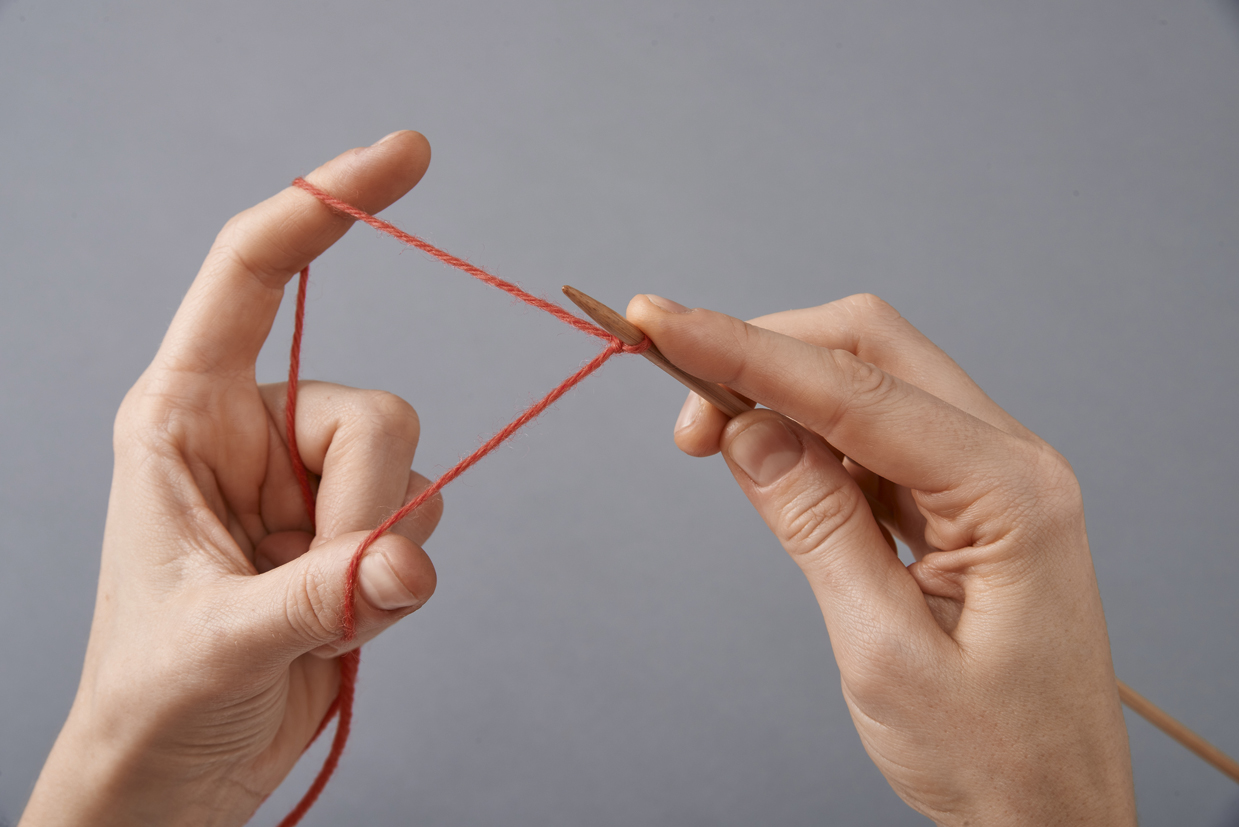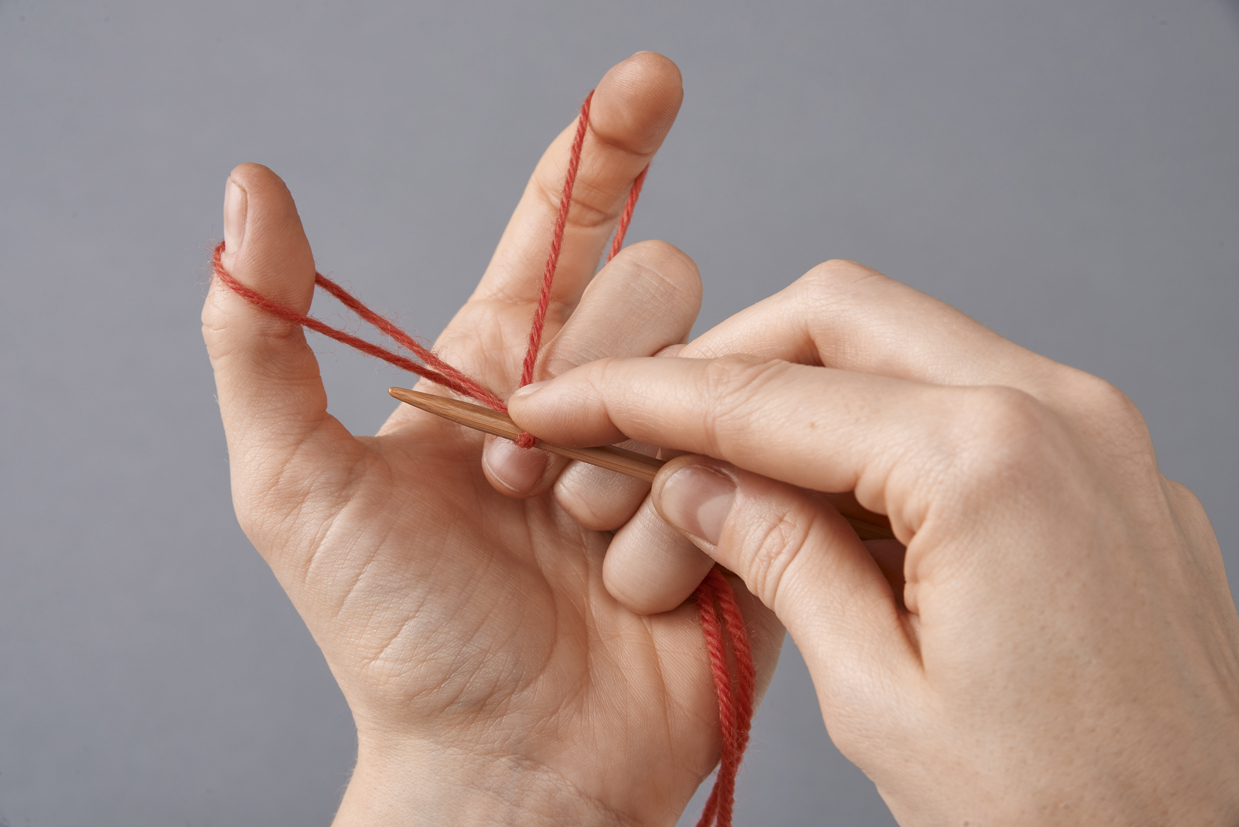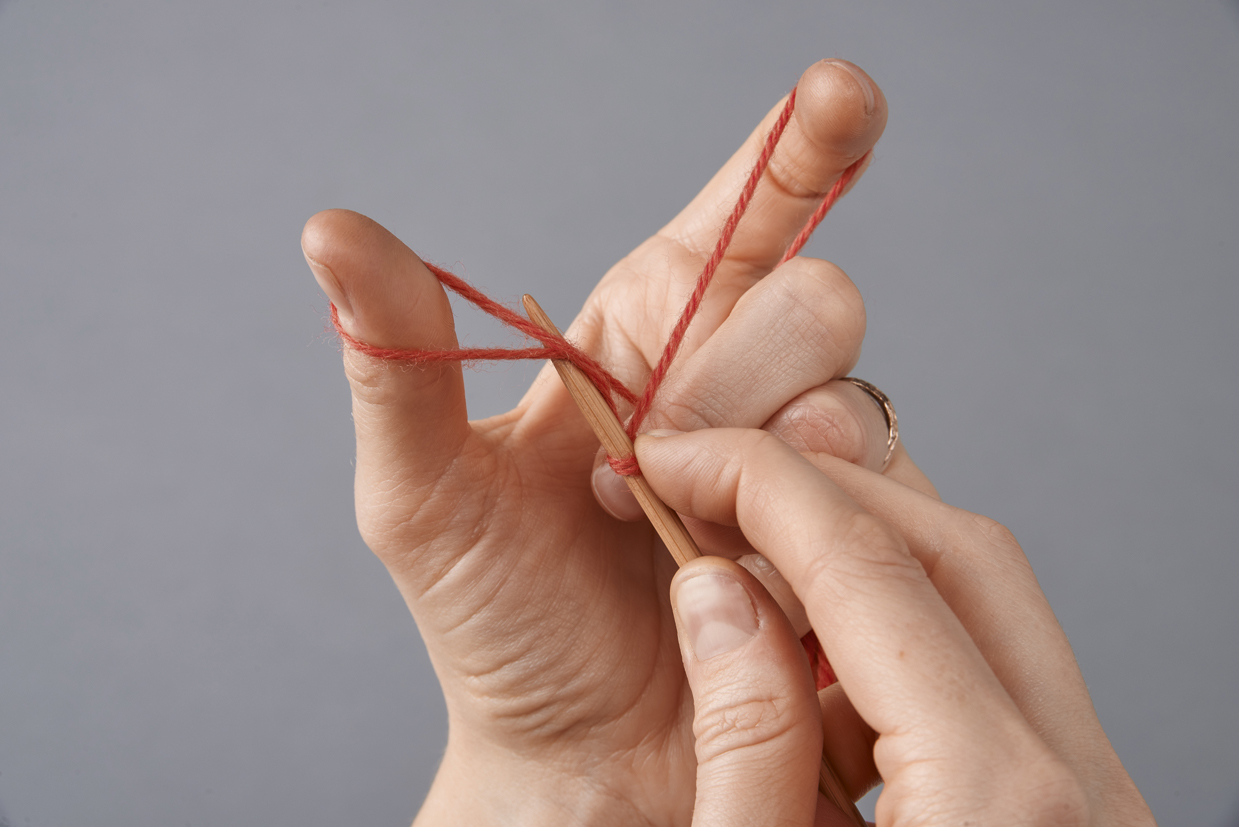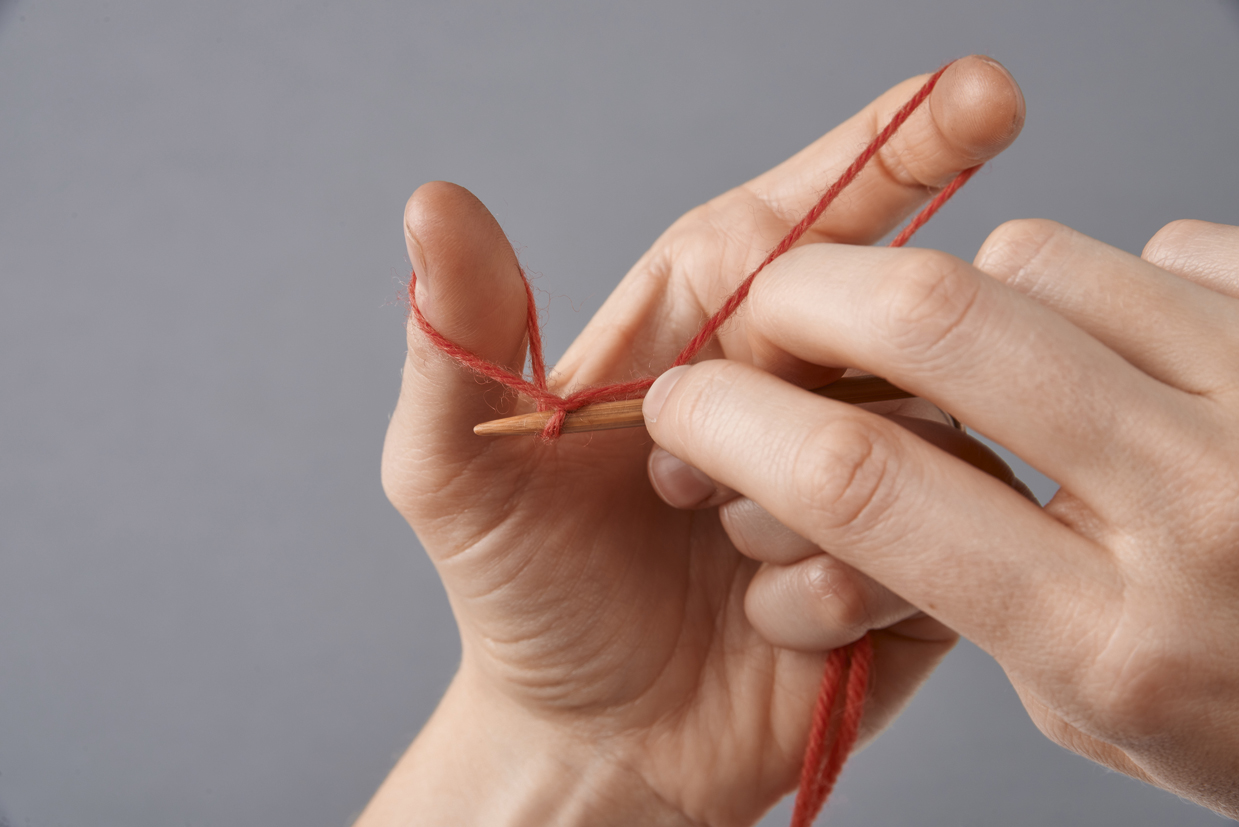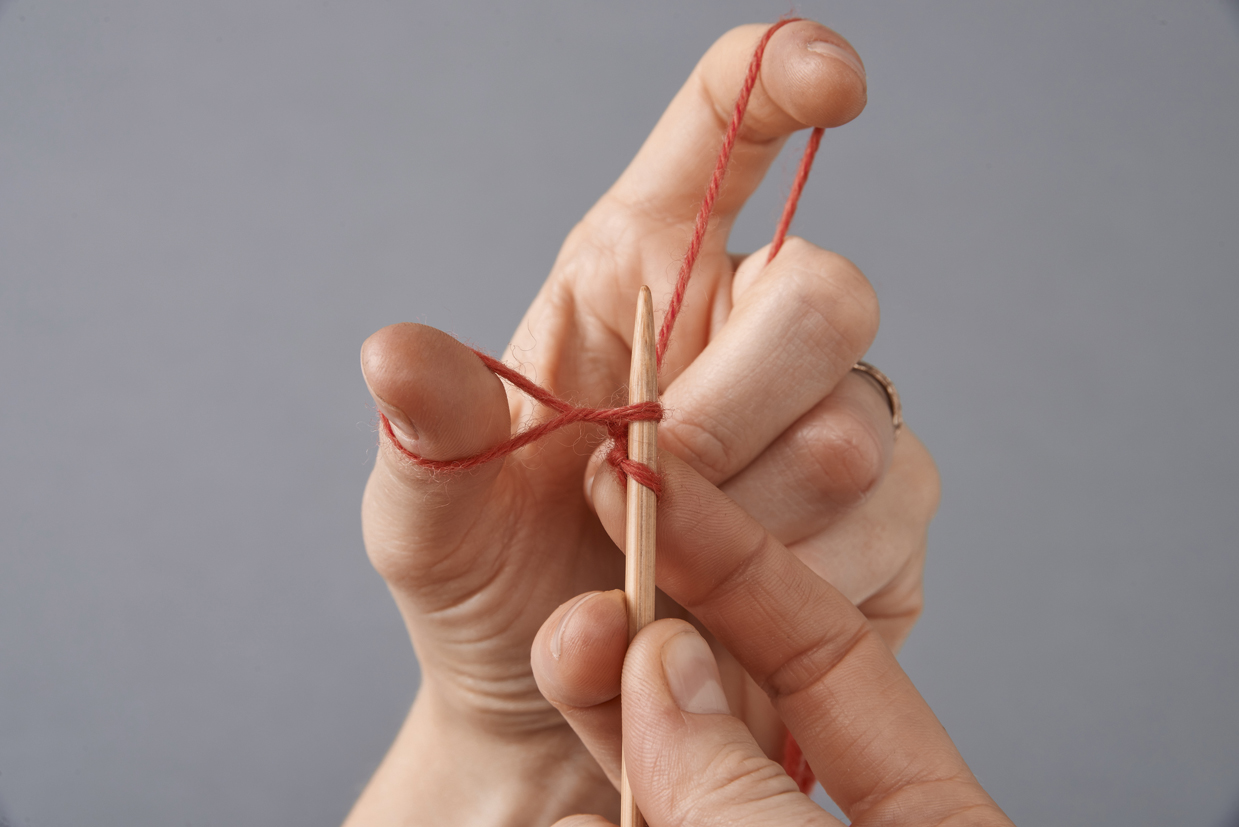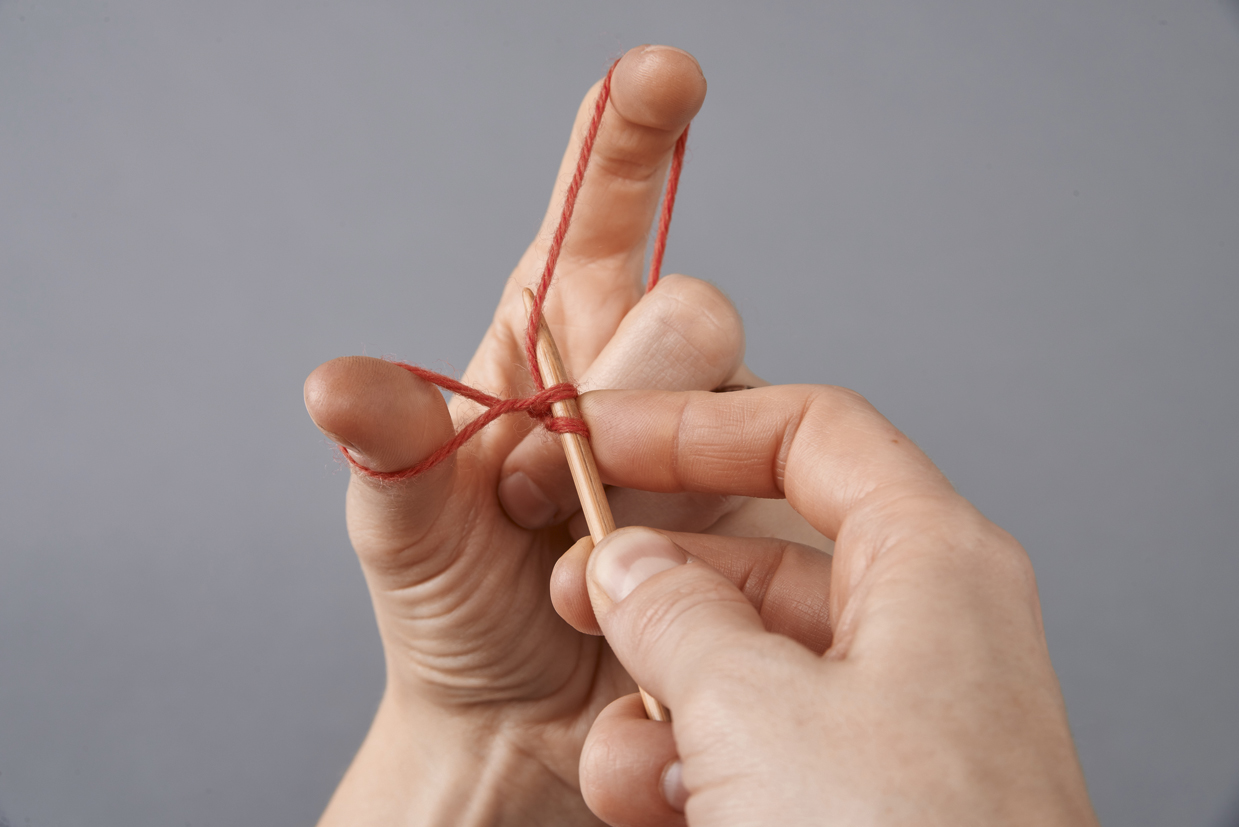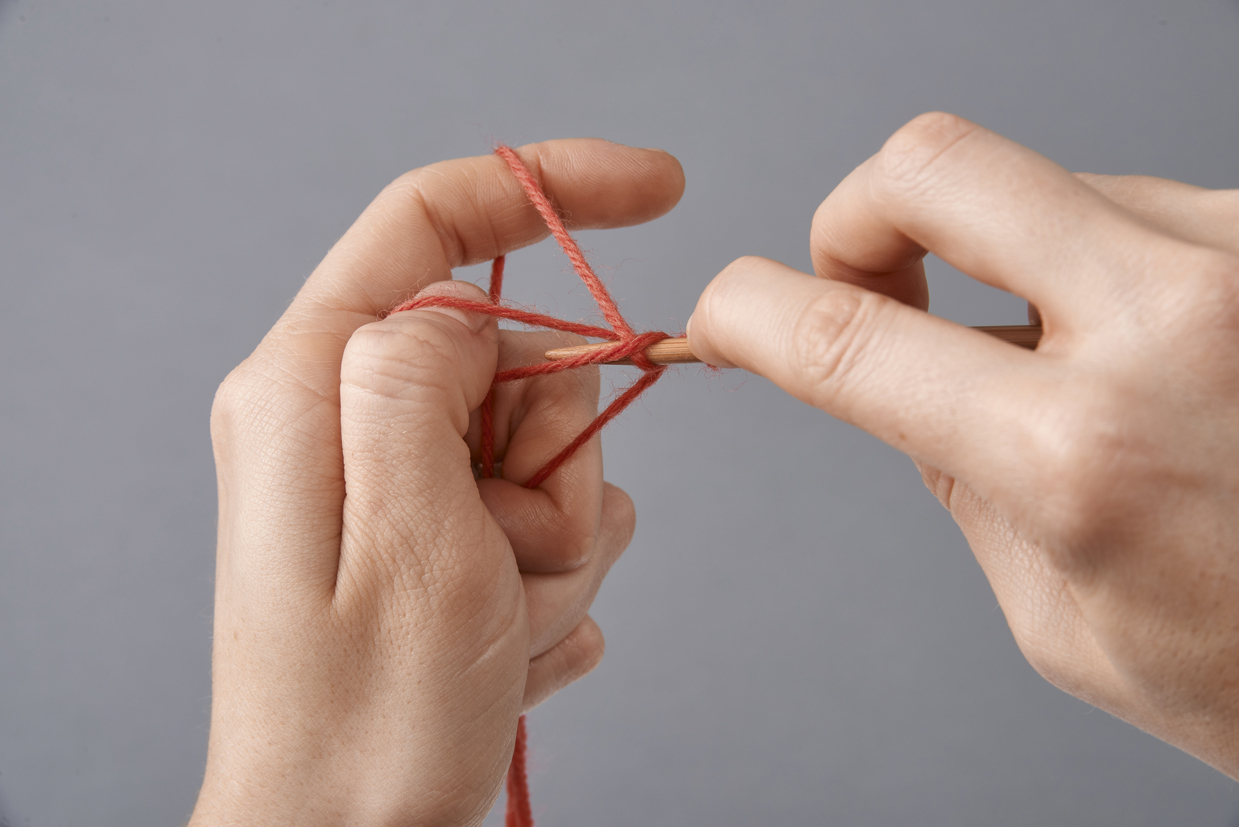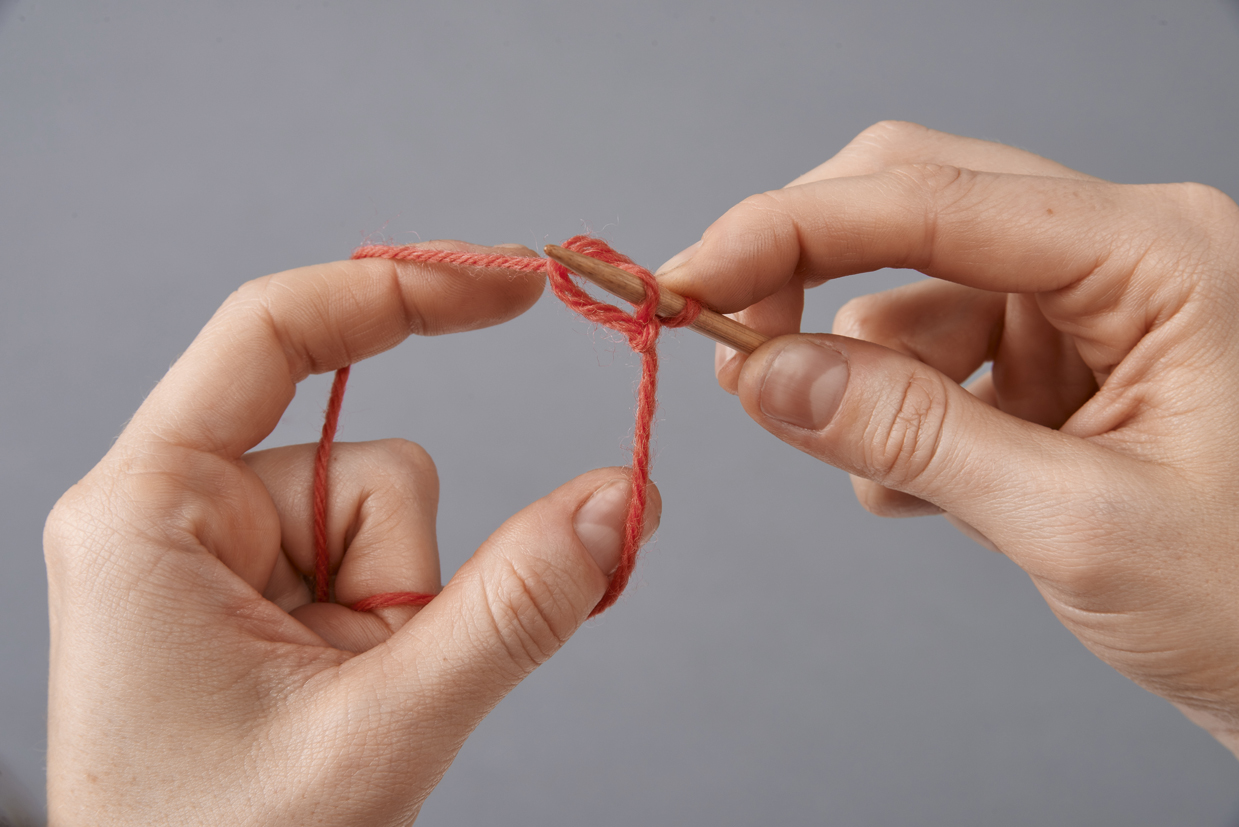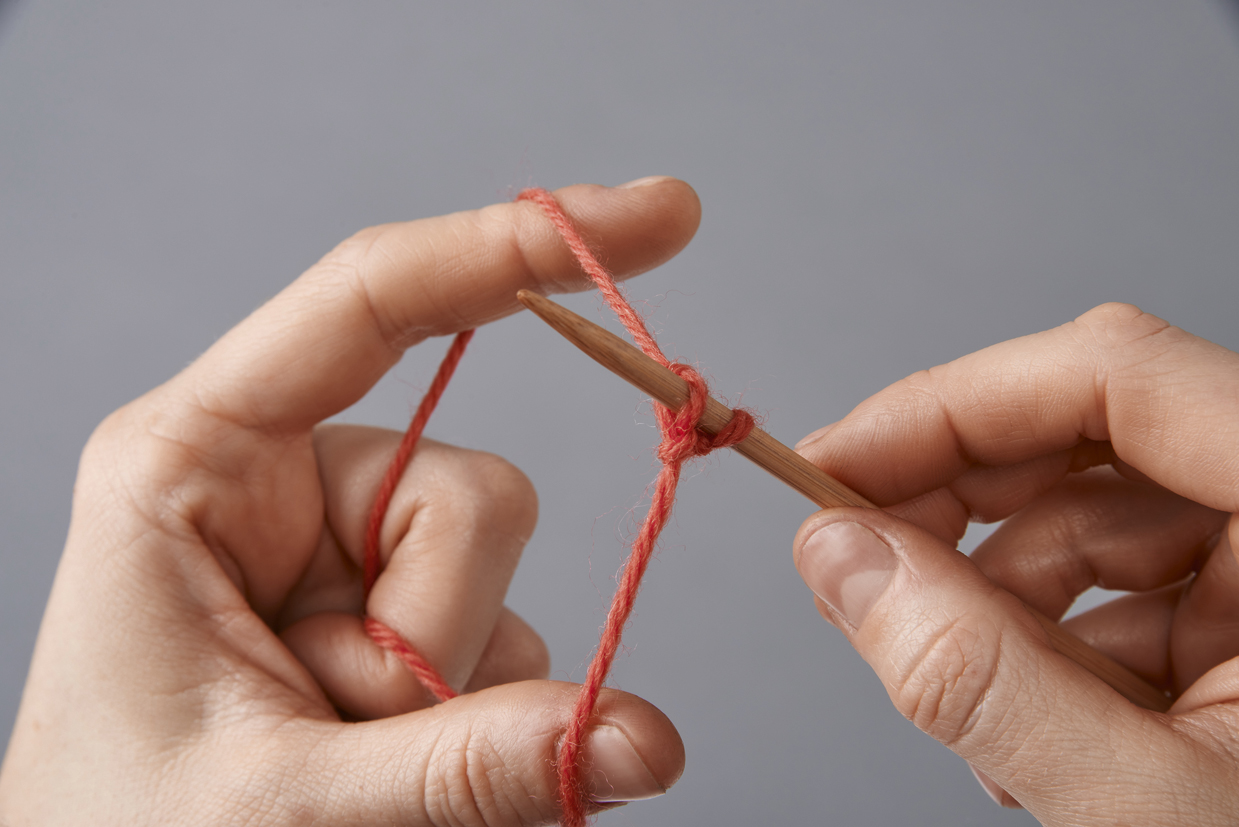The German twisted cast on is a great method to use for top-down socks, mittens and other cuffs.
It's strong yet stretchy, which is important if you're looking for a snug, even cuff that isn’t too tight at the cast-on edge.
It starts in a similar way to the long-tail cast on, or the thumb method (see our how to cast on knitting guide to find out how these are done).
The German twisted cast on is fun to do. The first row is nice and easy to work knit stitch or rib stitch into and, because of the added twists in each stitch, the work will spring back into shape nicely after it’s been stretched out.
For an even stretchier edge, try working this over two knitting needles held together in the right hand.
German twisted cast on step-by-step
Follow our guide to learn how to work the German twisted cast on:
